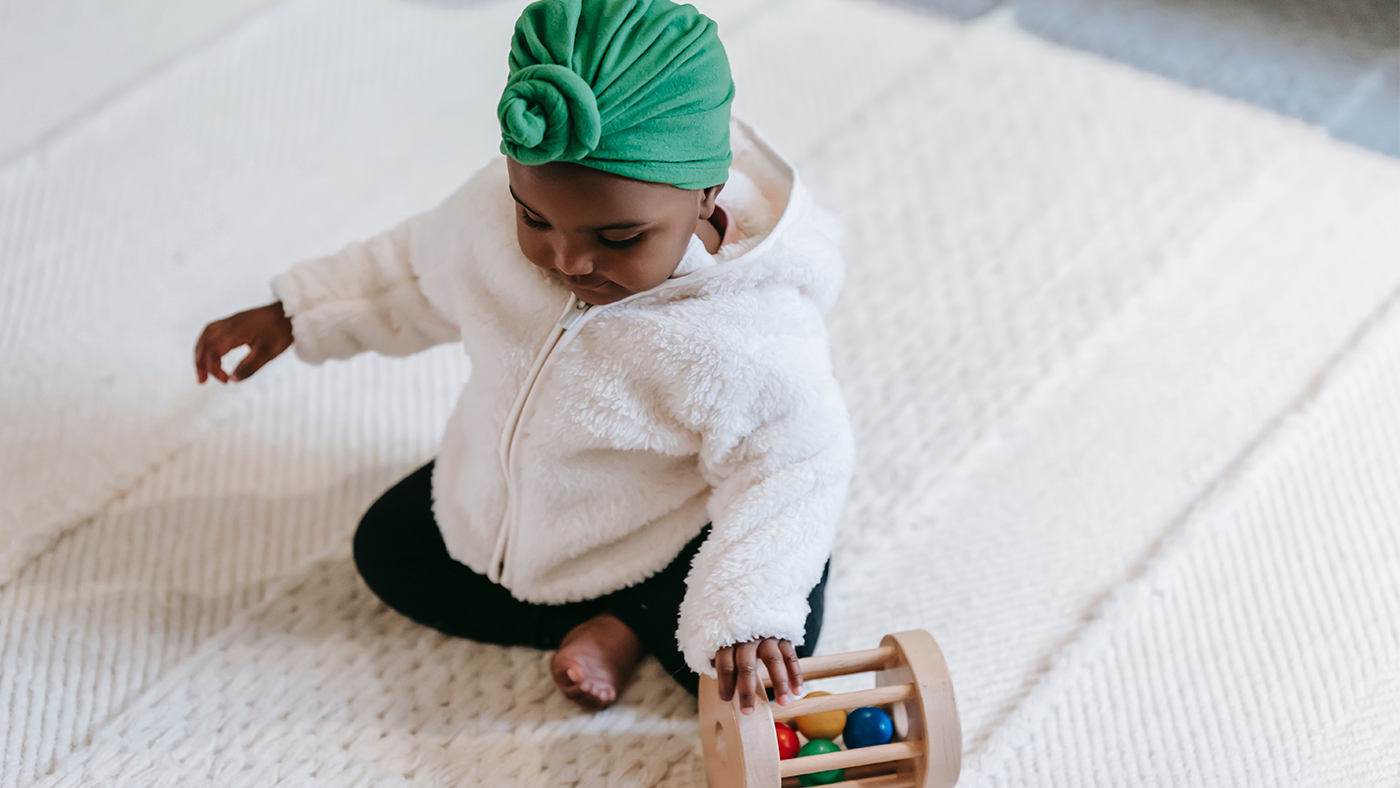Uses one arm to reach for objects rather than both

Your baby will have been gaining control of their arm movements and will have been reaching and grabbing objects using both hands. Now, they are able to control each side of their body separately, so can reach with one arm whilst keeping their other arm still.
Reaching
Reaching is something that we do without thinking, but for your baby, reaching brings together development in several streams, and is a milestone that supports their development in many ways.
Your baby might start to reach accurately at first in a position where their body is supported, so they do not need to maintain their posture as they reach. They might reach when lying on their back, or when you hold them in a sitting or slightly upright position. In these positions, they do not need to hold their body still as they reach as they are supported, and so can focus on the movement of their arms as they reach for an object. [1]
Your baby's first reaching motions will involve swiping at an object, perhaps missing at first or knocking it down rather than grasping the object. They will repeat these reaching movements many times, with large sweeping movements gradually becoming more controlled movements in a straight line towards an object. [2]
Reaching, control and movement
Reaching with one arm involves your baby doing different things with each side of their body, they need to one keep side of their body still as they move to reach with the other arm.
When lying on their tummy, they will transfer their weight from one side of their body to the other in order to free one arm to reach towards an object. [3] This is the same type of movement that will help them as they begin to move forwards, and for some babies, their early movement might develop from reaching with one arm and then the other.
Reaching and their senses
Reaching towards an object involves the coordination of movement with control of posture and vision. Your baby will notice an object and then look at it as they move their arm to reach the object. [1]
Some researchers suggest that, as babies develop their awareness of their body, they can reach without looking towards an object. They observed babies reaching towards objects in the dark and found that they were able to reach and grasp an object. [4]
When your baby moves their arm to reach for an object, this helps them to begin to develop their awareness of their body as they feel when their hand touches an object. Reaching also supports your baby’s development of depth perception, as they link what they see with what they feel and begin to understand how far they are reaching.
Reaching and exploring
When your baby can reach and grasp an object, this leads to more opportunities to explore objects as your baby will soon be able to reach towards and hold the object that they want to explore. [5] It is likely that your baby will continue to use their mouth to learn about objects for some time. However, reaching and holding objects leads to a greater understanding of properties such as weight and size as your baby feels differences between objects as they hold and explore them.
Reaching and planning
Your baby’s developing physical skills enable them to explore objects and through repeated exploration, they will begin to adjust how they do things as their cognitive skills develop. [5]
Now, your baby might use one arm to reach sometimes, and other times use both arms, but as they have more experience and are more able to plan, they will begin to use adjust their reach according to the object. They will reach for a large object using both arms and a smaller object using just one arm.
What next?
In the next few months, your baby will reach for objects with more accuracy and be able to adjust their movements as they reach towards an object. They will develop their fine motor skills and combine the movement of their arms and hands to reach for, hold and explore objects.
References
[1] Sugden, D & Wade, M. (2013) Clinics in developmental medicine. Typical and atypical motor development. London: Mac Keith Press.
[2] Goddard-Blythe, S. (2004). The Well Balanced Child: Movement and Early Learning. Stroud: Hawthorn Press.
[3] Sheridan, M., Sharma, A and Cockerill, H. (2014). Mary Sheridan’s from birth to five years. Children’s developmental progress. (4th edn.). Abingdon: Routledge.
[4] Crowley, K. (2017) Child Development. A Practical Introduction (2nd edn). London: Sage.
[5] Corbetta D., Thelen E., Johnson K. (2000) ‘Motor constraints on the development of perception–action matching in infant reaching’ Infant Behavior and Development, 23, pp. 351-374